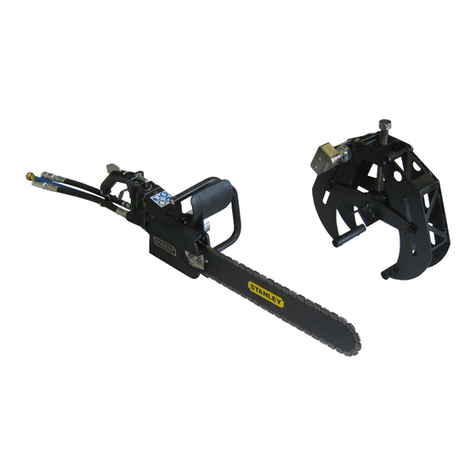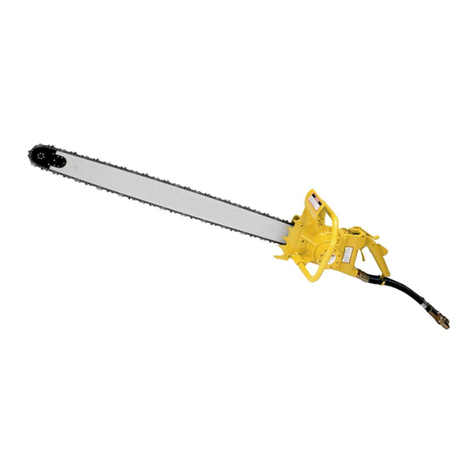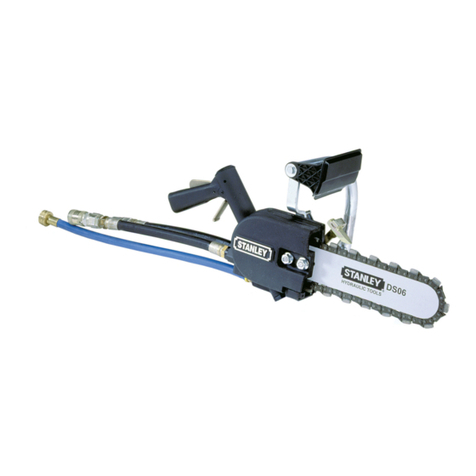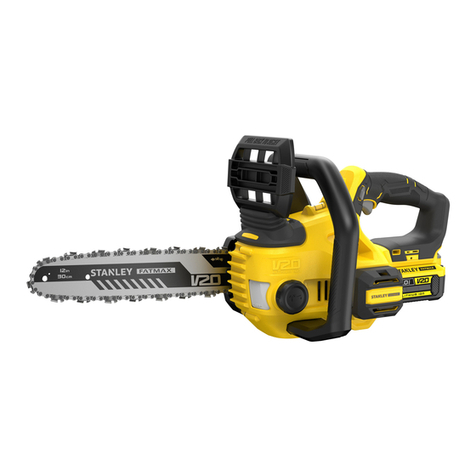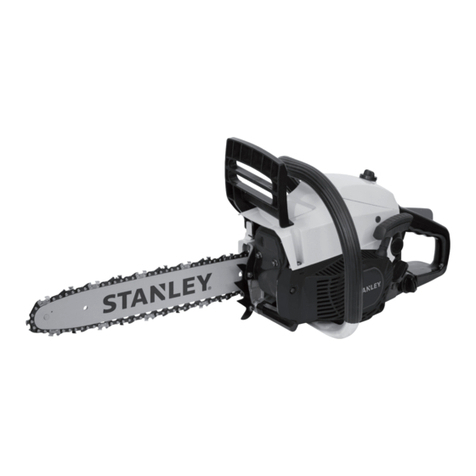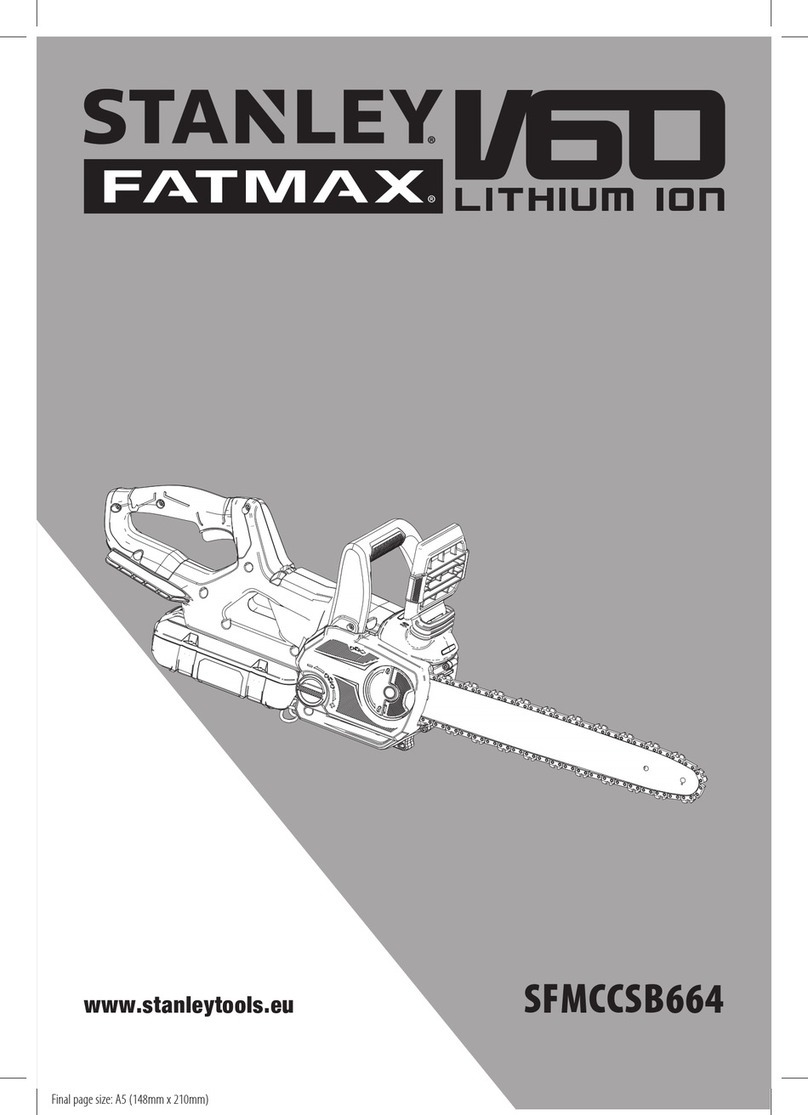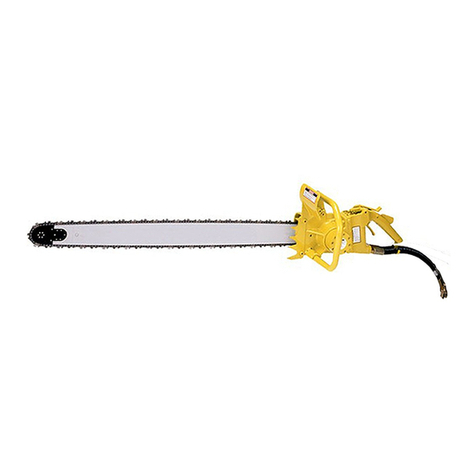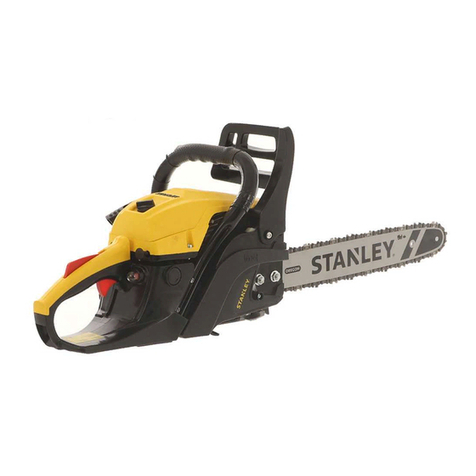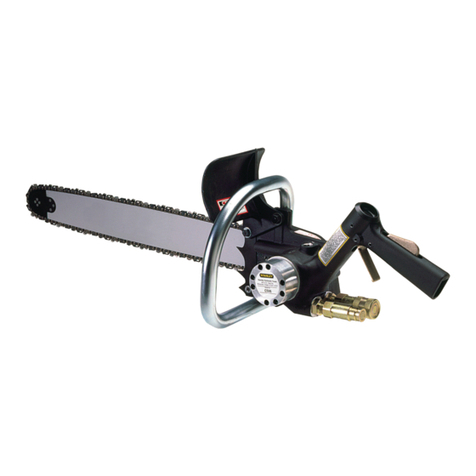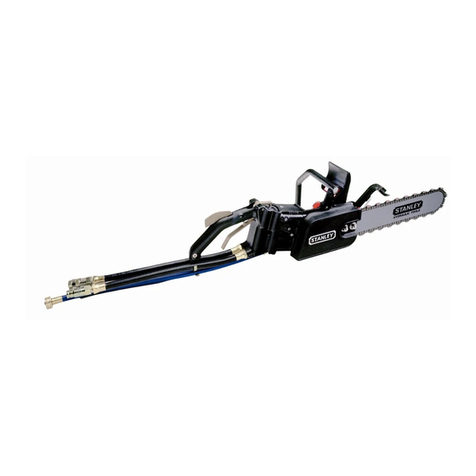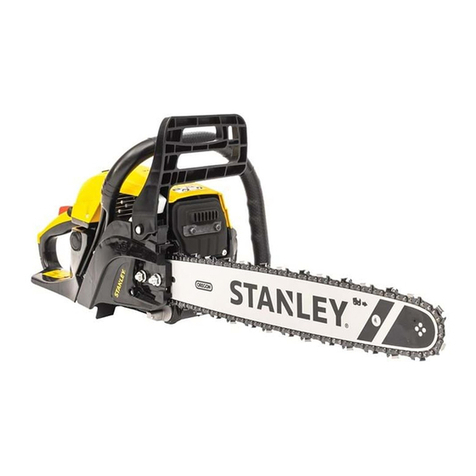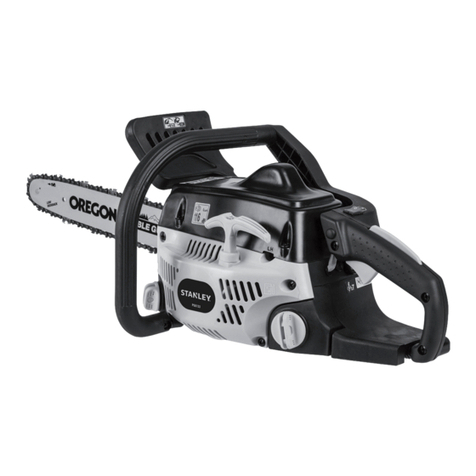
DS12 User Manual ◄ 5
Tool operators and maintenance personnel must always
comply with the safety precautions given in this manual
and on the stickers and tags attached to the tool and
hose.
These safety precautions are given for your safety. Re-
view them carefully before operating the tool and before
performing general maintenance or repairs.
Supervising personnel should develop additional pre-
cautions relating to the specic work area and local
safety regulations. If so, place the added precautions in
the space provided in this manual.
The DS12 Utility Saw will provide safe and dependable
service if operated in accordance with the instructions
given in this manual. Read and understand this manual
and any stickers and tags attached to the tool and hoses
before operation. Failure to do so could result in per-
sonal injury or equipment damage.
• Establish a training program for all operators to en-
sure safe operation.
• The operator must be familiar with all prohibited
work areas such as excessive slopes and danger-
ous terrain conditions.
• Do not operate the chain saw unless thoroughly
trained or under the supervision of an instructor.
• Always wear safety equipment such as goggles, ear,
breathing, head protection, leg protection, gloves,
snug tting clothing and safety shoes at all times
when operating the chain saw.
• Do not overreach. Maintain proper footing and bal-
ance at all times.
• Do not inspect or clean the chain saw while the hy-
draulic power source is connected. Accidental en-
gagement of the chain saw can cause serious injury.
• Always connect hoses to the chain saw hose cou-
plers before energizing the hydraulic power source.
Make sure all hose connections are tight.
• Do not operate the chain saw at uid temperatures
above 140 °F/60 °C. Operation at higher tempera-
tures can cause higher than normal temperatures
at the chain saw which can result in operator dis-
comfort.
• Do not rely exclusively upon the safety devices built
into the chain saw. As a chain saw user, several
steps must be taken to keep your cutting jobs free
from accident or injury:
a. With a basic understanding of kickbacks, you
can reduce or eliminate the element of surprise.
Sudden surprise contributes to accidents.
b. Keep a good rm grip on the chain saw with
both hands, the right hand on the rear handle
and the left hand on the front handle when oper-
ating the chain saw. Use a rm grip with thumbs
and ngers encircling the chain saw handles. A
rm grip helps reduce kickbacks and maintains
control of the chain saw. Do not let go.
c. Make sure the area in which you are cutting is
free of obstructions.
d. Cut at rated operating speeds (gpm).
e. Do not overreach or cut above shoulder height.
f. Only use replacement bars and chains specied
by Stanley or the equivalent.
• Make sure the chain guard is in place before operat-
ing the chain saw.
• Remove or control the water slurry to prevent your-
self or others from slipping while cutting.
• Provide adequate ventilation in closed areas when
operating a gas or diesel hydraulic power source.
• Do not operate a hydraulic power source or a hy-
draulic diamond saw in an explosive atmosphere.
• Warning: Use of this tool on certain materials during
demolition could generate dust potentially contain-
ing a variety of hazardous substances such as as-
bestos, silica or lead. Inhalation of dust containing
these or other hazardous substances could result
in serious injury, cancer or death. Protect yourself
and those around you. Research and understand
the materials you are cutting. Follow correct safety
procedures and comply with all applicable national,
state or provisional health and safety regulations
relating to them, including, if appropriate arranging
for the safe disposal of the materials by a qualied
person.
SAFETY PRECAUTIONS
